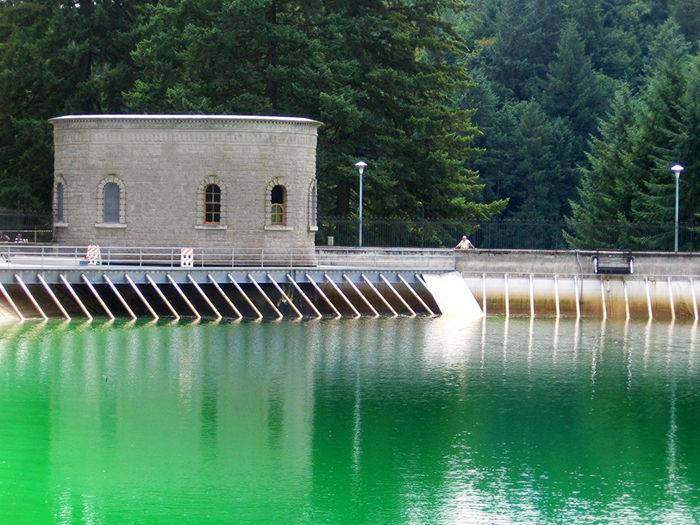Reservoirs source of carbon, study finds
Reservoir 3 in Portland’s Washington Park. A study by WSU researchers shows that reservoirs are the source of about 1.3 percent of all greenhouse gas produced by humans.
October 7, 2016
A new paper by WSU researchers suggests that carbon emissions from reservoirs may need to be taken seriously as part of the global carbon budget.
The work is a combination of all scientific writings regarding greenhouse gas emissions globally since 2000. John Harrison, co-author and associate professor at the WSU Vancouver School of the Environment, said the reservoirs of the world produce the equivalent of about one gigaton of carbon dioxide each year, or 1.3 percent of all human-produced greenhouse gases.
“That’s more greenhouse gas production than all of Canada,” said Bridget Deemer, WSU research associate and lead author.
Harrison attended a meeting last month in Minsk, Belarus, to discuss including reservoir emissions in a planned Intergovernmental Panel on Climate Change update of how countries report their greenhouse gas inventories.
Deemer said methane emissions account for more than 80 percent of the total global warming impact from reservoirs.
The researchers are also the first to consider methane bubbling in models of reservoir greenhouse gas emissions. Previous papers only considered the more traditional pathway of diffusion, but by including the bubbles into their estimates there is a 25 percent higher per-area rate of methane emission from reservoirs than had previously been reported.
“The implication for this,” Harrison said, “is that the impact of every additional reservoir will be greater than previously thought.”
The paper also stated that the best method of predicting the total global warming effect of a reservoir is by how biologically productive it is, with more algae and nutrient rich systems producing more methane.
“Reservoirs are human designed and operated which gives us the opportunity to think about where they are placed,” Deemer said. “The working hypothesis is that if we place them in areas where they are not receiving high nutrient input we could reduce their total emissions.”
Reporting by Hannah Welzbacker





















